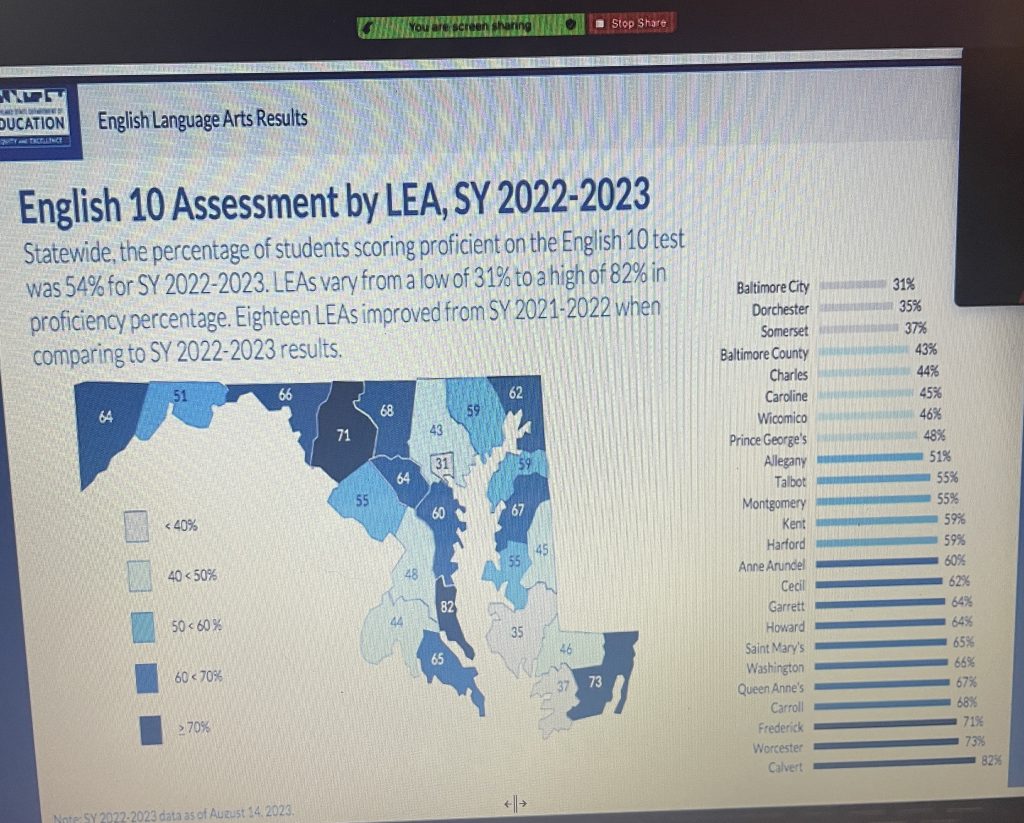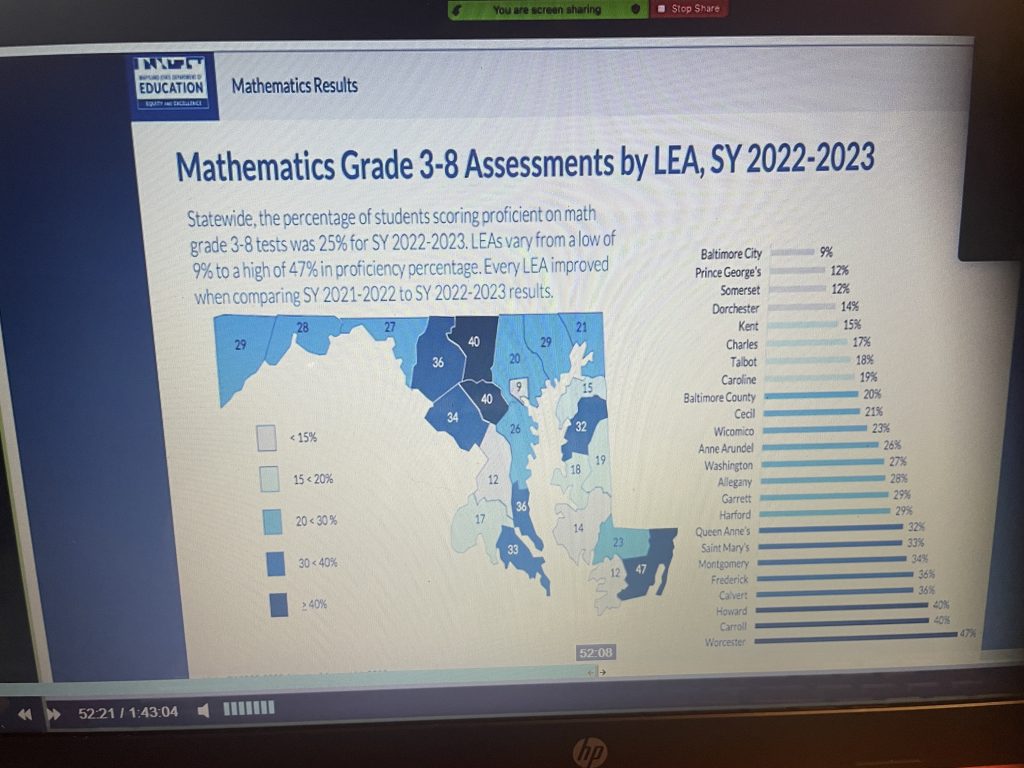A year ago, the State of Maryland delayed the publication of scores from the Maryland Comprehensive Assessment Program for four months because they were so bad. The State claimed it was for administrative purposes as they tested specific test items to see if they were an accurate assessment of student skills. But, eventually, they released the scores in late January.
The scores were bad. At the time the State Superintendent brushed the scores aside and said "they weren't as bad as he thought they would be." One wonders if he will say that this year as he takes a quick exit from his position at the helm of Maryland schools.
Once again, the scores are bad. Very bad.
On Wednesday night, Assistant Superintendent of Instruction for the Talbot County Public Schools Dr. Helga Einhorn presented the county's 2023 scores at the Board of Education meeting.
There was no spin. No "look on the bright side." Nothing that was an attempt to make the scores look better. To use the old adage, "it is what it is."
You won't find the scores on the Maryland State Department of Education website yet. As is usual, the State releases state scores first, then allows locals to release theirs, and then allow individual schools to release theirs. In this way, they let everyone have the right to get first crack at making the public aware of the condition of their schools.
In English Language Arts Grades 3-8, Talbot County had 42% of students score in the "proficient" or higher range. Mind you, "proficient" means that a student can do basic work in the subject. There are four score ranges, politically named, beginning learner, developing learner, proficient learner, and distinguished learner. No one wants to tell any parent whose child is in the first two levels that their kids have no academic skills. The State average is 47%. Talbot was ninth from the bottom.

Top in the State was Worcester with 68% of their students proficient in English Language Arts. Bottom was Baltimore City with 25%.
Tenth grade students fared better on the test, with 55% of tenth graders scored proficient in ELA. Of course, that is slightly over half of the tenth graders in the system, meaning 45% are NOT proficient in ELA.

The picture was worse in Math. This was true both in the State and in Talbot County.

It is a disastrous picture. Talbot only had 18% of students grades 3-8 scoring in the proficient range in math. This was 7th from the bottom in the State. Only Baltimore City, Prince Georges', Somerset, Dorchester, Kent, and Charles scored lower. The top in the State, Worcester, scored at 47%. The State average was 25%. Two sub-groups in Talbot, African American and English Language Learners, scored less than 5 % proficient in math.
There were other scores. In Science, 29.5% of Talbot students scored proficient. The State Average was 34.5 %. In Government, 33.1% were proficient. Nothing to cheer about here.
There were no reasons given for the poor testing performance. It's been three years since the pandemic and the Blueprint is being implemented.
According to Talbot Superintendent Sharon Pepukayi, they have implemented math coaches in the schools to help train teachers in the best methods for teaching math. The system is focusing on math and reading in a way they have not in the past.
Is it enough?
It might be if there wasn't so much standing in the way of success. Between all the mandated programs of the Blueprint, teacher shortages, system overreach into Community schools which provide "wraparound" services for students, discipline issues, CRT, mental health counseling, there may not be enough hours and days in the school year to cover the 435 standards in math and the 122 standards in English Language Arts that the tests require.
When I was a teacher, I remember someone doing a workshop about why American schools needed to change their focus. This was in 2004 and the consultant said, "The problem with American schools is not that they don't do enough. The problem is that they do too much." Then he went on to explain, "The American curriculum is ten miles long and an eighth of an inch deep."
With so much to do, teachers are rushing through content with no depth nor student mastery or true competence. Add to that all the other initiatives they are asked to conduct each day, and the rush to get through it all is paired with less and less time. Teachers adapt by teaching to the middle, the mean, at the expense of students at the top or the bottom of the class. Students on the top end of the learning pyramid are able to grasp content, but it is not necessarily with the expertise that they should have. Those at the bottom are perpetually lost. Yet, they get passed on to the next grade.
Another concept I was taught when I was teaching was the importance of "time on task." The Japanese thrive on this idea, making sure that classroom time is productive and uninterrupted. The American classroom is one intrusion after another, making it impossible to get through good, solid instruction. One special project after another stops the flow of learning.
There are other ways to remove distractions. Get rid of laptops/iPads in the classroom unless students are using them for a very narrow, specific purpose. Technology is more of a distraction and a crutch than a real aid to learning. Stop paying companies like Apple millions to create a generation of eager consumers for their products. Teach kids to use their brains to solve problems, not technology.
Finally, allow teachers to teach. Give them the tools, the strategies, the authority to teach. Make sure they are competent in their content. Mentor them, listen to them, help them. But let them teach without asking them to do things they are not able to do.
The problem with these solutions is they are not glamorous or expensive. They won't get anyone kickbacks or big publicity. No one will sell books or become a consultant based on these ideas.
But maybe, just maybe, the kids will thrive, achieve, and learn.
Sadly, one wonders if that is what the education establishment wants. Because they are doing a great job of doing just the opposite.